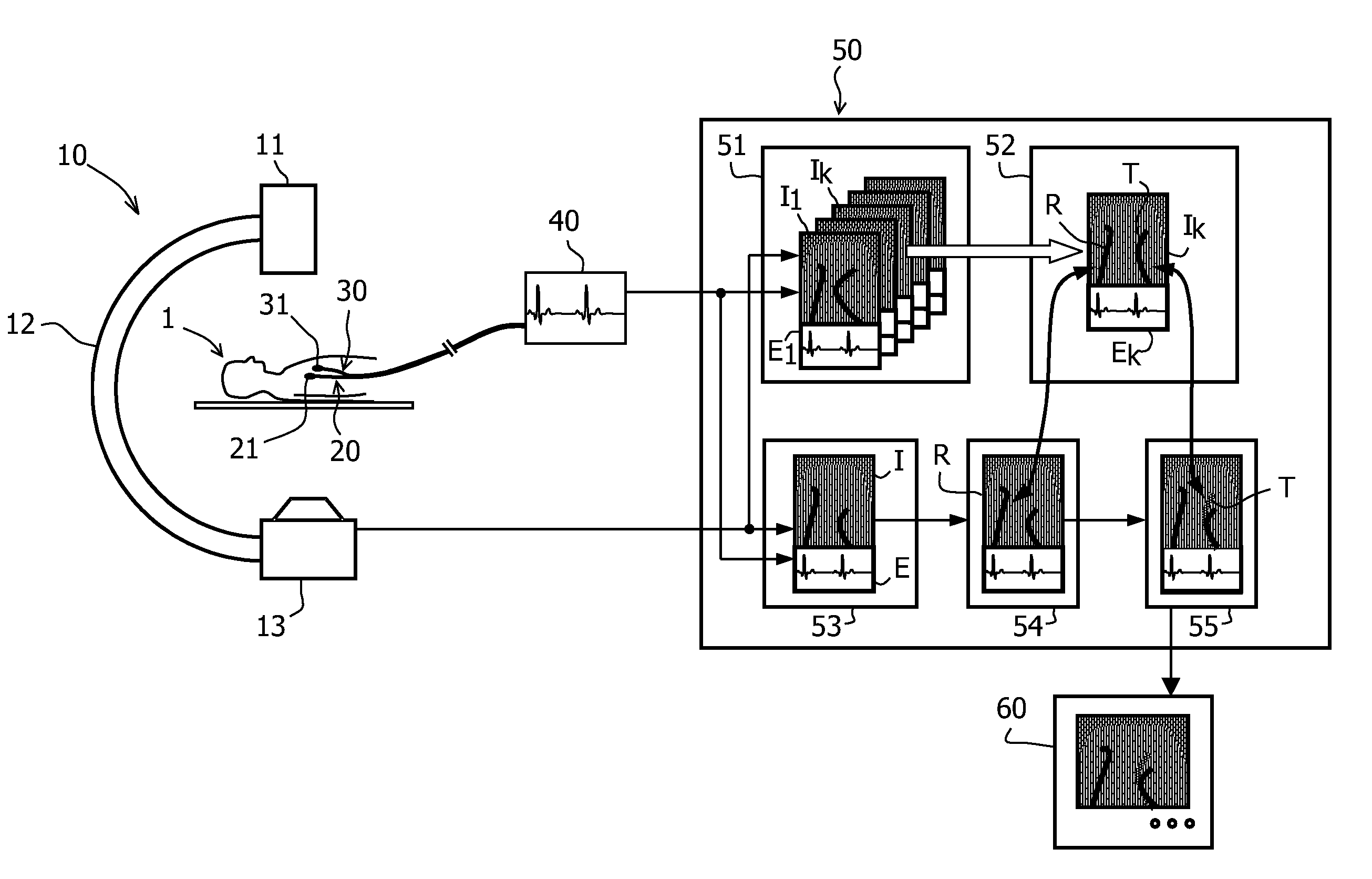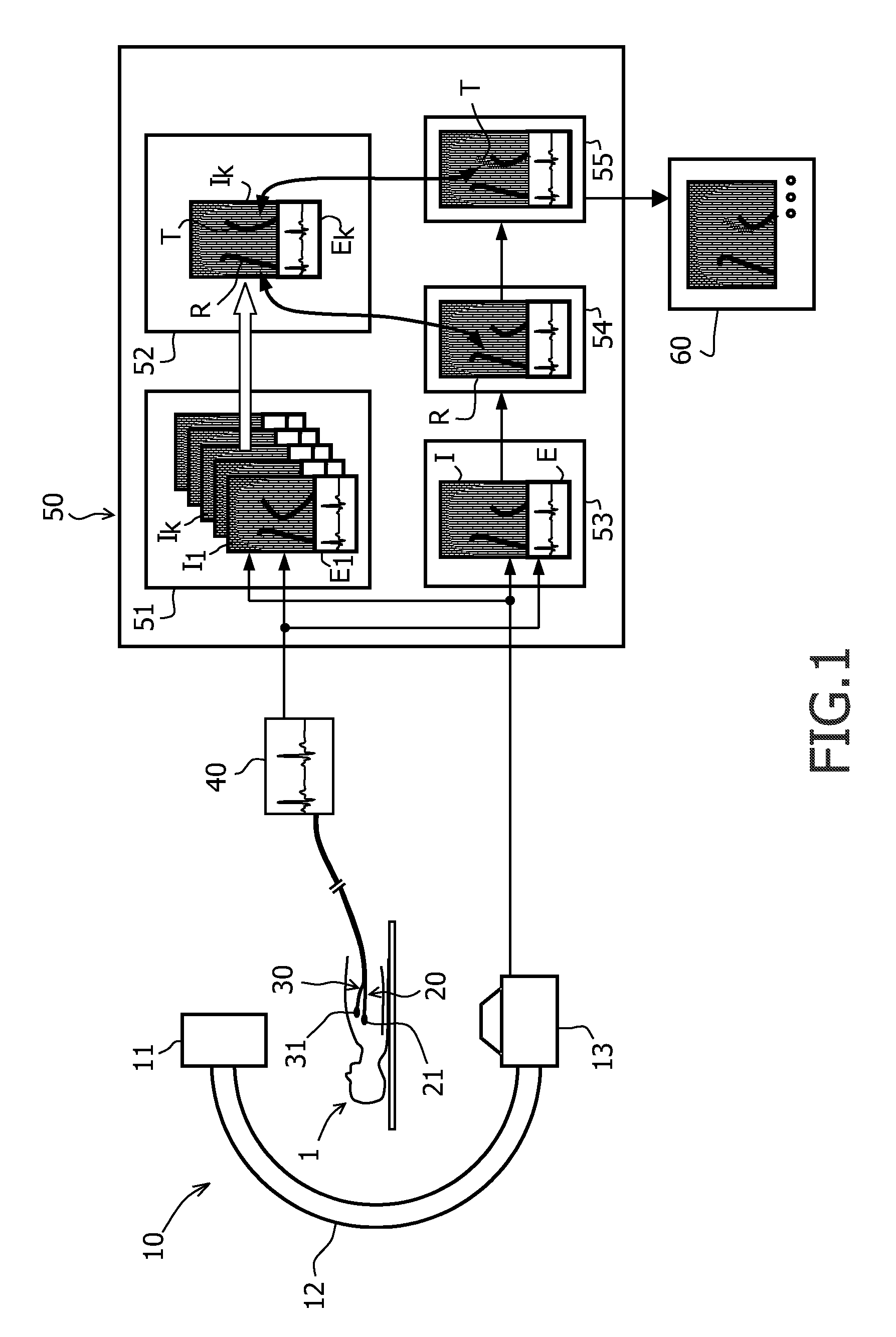System and method for the guidance of a catheter in electrophysiologic interventions
a catheter and electrophysiologic technology, applied in the field of interventional systems and methods for cardiovascular interventions with catheters, can solve the problems of long procedure time, difficult and lengthy procedure, and the catheter is not able to reach the desired ep signal location, so as to achieve optimal accuracy and reduce the effect of movement and/or deformation of the interventional region due to heart bea
- Summary
- Abstract
- Description
- Claims
- Application Information
AI Technical Summary
Benefits of technology
Problems solved by technology
Method used
Image
Examples
Embodiment Construction
[0034]On the left side of the FIGURE, a rotational X-ray device 10 is depicted that consists of an X-ray tube 13 and an X-ray detector 11 which are connected by a C-arm 12. The X-ray device 10 allows the generation of X-ray projections from different directions of a patient 1 lying on a table in the centre of the device. Instead of an X-ray device, other imaging devices could be used as well.
[0035]The FIGURE further shows a catheter 20 that is advanced through the vessel system of the patient 1 into the heart. An electrode 21 at the tip of the catheter is coupled to an electrocardiographic device 40 for recording electrophysiological potentials of the tissue contacting the electrode 21. For the electrophysiological measurements, a second or “reference” catheter 30 is present and connected to the electrographic device 40, too, wherein said catheter 30 and its reference electrode 31 usually rest at a constant anatomical position during the whole intervention.
[0036]A typical applicatio...
PUM
 Login to View More
Login to View More Abstract
Description
Claims
Application Information
 Login to View More
Login to View More - R&D
- Intellectual Property
- Life Sciences
- Materials
- Tech Scout
- Unparalleled Data Quality
- Higher Quality Content
- 60% Fewer Hallucinations
Browse by: Latest US Patents, China's latest patents, Technical Efficacy Thesaurus, Application Domain, Technology Topic, Popular Technical Reports.
© 2025 PatSnap. All rights reserved.Legal|Privacy policy|Modern Slavery Act Transparency Statement|Sitemap|About US| Contact US: help@patsnap.com


